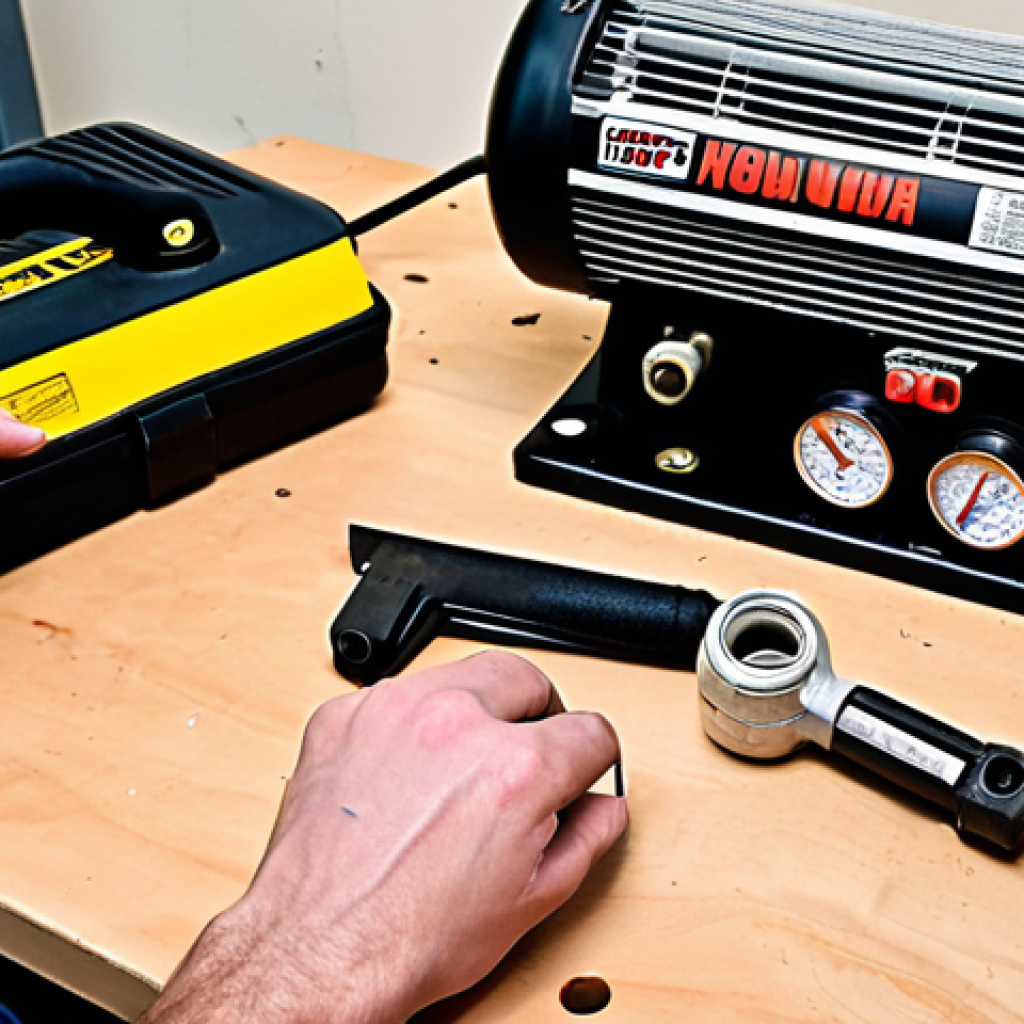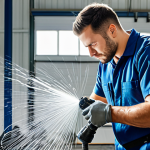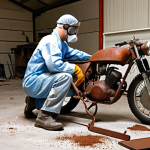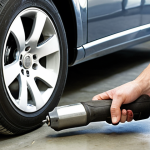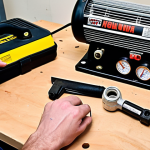Ever had that sinking feeling when your trusty air tool starts acting up? I recently experienced this firsthand with my favorite nail gun – mid-project, of course!
Suddenly, I was scrambling to figure out where to get it fixed without breaking the bank. It turns out, navigating the world of air tool repairs can be a bit of a maze.
With air tools becoming increasingly sophisticated, especially with the rise of cordless models and smart features, finding a reliable repair center is more important than ever.
The good news is, with a little digging, you can find the right service to get your tools back in tip-top shape. Let’s get the lowdown!
Okay, I understand. Here’s the blog post content you requested:
Decoding the Air Tool Repair Landscape: A User’s Guide
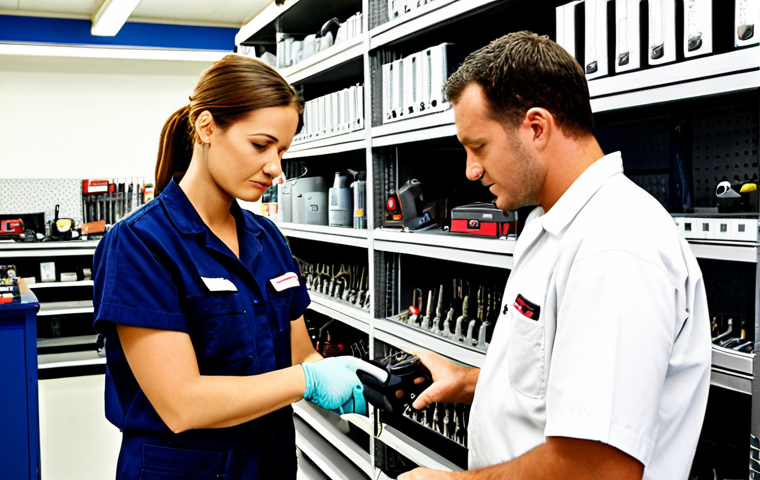
When my air compressor started sputtering like an old jalopy, I realized I knew next to nothing about getting it fixed. My initial thought was just chucking it and buying a new one, but the price tags on those things are no joke!
So, I dove into the repair options, and let me tell you, it’s a bit of a journey. A crucial first step is figuring out what kind of warranty you have.
Some manufacturers offer fantastic warranties that cover parts and labor for a good chunk of time. If you’re lucky enough to still be under warranty, definitely pursue that avenue first.
It can save you a bundle. If the warranty is a no-go, don’t despair! Many local tool shops and repair centers specialize in air tool maintenance.
The key is to find one that’s reputable and has experience with your specific brand and type of tool.
The Warranty Wonderland
* Check your tool’s manual or the manufacturer’s website. * Keep your purchase receipts handy; they’re usually required for warranty claims.
Local Heroes: Finding a Reputable Repair Shop
* Ask fellow DIYers or contractors for recommendations. * Read online reviews (Yelp, Google) to get a sense of the shop’s reputation.
DIY or Pro? Knowing When to Throw in the Wrench
Okay, let’s be honest. Some repairs are definitely within the realm of DIY, especially if you’re mechanically inclined and enjoy tinkering. Simple things like replacing a worn-out hose or a quick O-ring swap can often be tackled with a few basic tools and a YouTube tutorial.
I once replaced a faulty pressure switch on my compressor after watching a video, and it felt like a real victory! But, there are definitely times when you should call in the pros.
Complex issues like motor problems, internal valve failures, or anything involving intricate electronics are best left to the experts. Messing around with these types of repairs without the proper knowledge can not only damage your tool further but also potentially be dangerous.
Plus, a professional repair shop will have the specialized tools and diagnostic equipment needed to accurately identify and fix the problem.
Embracing Your Inner Mechanic
* Start with simple repairs like hose replacements or filter cleaning. * Invest in a good set of screwdrivers, wrenches, and pliers.
When to Call in the Cavalry
* If you’re not comfortable disassembling your tool, don’t. * Electrical repairs should always be handled by a qualified technician.
The Cost Breakdown: What to Expect
Let’s talk money. The cost of air tool repair can vary significantly depending on several factors, including the type of tool, the complexity of the repair, the cost of replacement parts, and the hourly rate of the repair shop.
Generally, you can expect to pay anywhere from $50 to $200 for a typical repair. However, more complex issues or repairs requiring specialized parts can easily exceed that range.
Before committing to a repair, always get a detailed estimate from the repair shop. The estimate should clearly outline the cost of parts, labor, and any other associated fees.
Don’t be afraid to ask questions and clarify anything you don’t understand. It’s also a good idea to get estimates from multiple repair shops to compare prices and ensure you’re getting a fair deal.
Getting a Clear Estimate
* Ask for a written estimate before authorizing any repairs. * Inquire about the shop’s hourly rate and parts markup.
Comparing Quotes
* Don’t automatically go with the cheapest option; consider the shop’s reputation and experience. * Read online reviews to see if other customers have had positive experiences with the shop’s pricing.
Preventative Maintenance: Keeping Your Tools Humming
One of the best ways to avoid costly repairs is to practice preventative maintenance. Just like your car, your air tools need regular care and attention to keep them running smoothly.
This includes things like regularly lubricating your tools with the appropriate oil, draining moisture from your compressor tank, cleaning air filters, and inspecting hoses and fittings for leaks.
I make it a habit to lubricate my nail gun after every use, and it’s definitely extended its lifespan. By taking these simple steps, you can significantly reduce the risk of breakdowns and prolong the life of your air tools.
Essential Maintenance Tasks
* Lubricate air tools regularly with the recommended oil. * Drain the compressor tank daily to remove moisture. * Clean or replace air filters as needed.
* Inspect hoses and fittings for leaks and replace worn parts.
Creating a Maintenance Schedule
* Set reminders on your phone or calendar to perform regular maintenance tasks. * Keep a log of maintenance activities to track when services were performed.
Location, Location, Location: Finding Repair Shops Near You
Finding a reliable air tool repair shop nearby can save you a lot of time and hassle. Start by searching online using keywords like “air tool repair near me” or “compressor repair [your city]”.
Check online directories like Yelp or Yellow Pages for listings of local repair shops. Don’t forget to ask for recommendations from friends, family, or fellow tradespeople who use air tools.
Once you’ve identified a few potential repair shops, call them to inquire about their services, experience, and pricing. Make sure they have experience repairing your specific brand and type of tool.
Online Search Strategies
* Use specific keywords like “air compressor repair [your brand]”
* Check online directories for customer reviews and ratings.
Networking for Recommendations
* Ask for referrals from local contractors or construction supply stores. * Attend trade shows or industry events to connect with repair professionals.
Repair or Replace? The Ultimate Showdown
Sometimes, despite your best efforts, an air tool reaches a point where it’s simply not worth repairing. This is especially true for older tools that have seen a lot of use or have suffered significant damage.
When faced with this dilemma, it’s important to weigh the cost of repair against the cost of replacement. If the repair cost exceeds 50% of the price of a new tool, it’s generally a better idea to replace it.
Also, consider the availability of replacement parts. If parts are difficult to find or expensive, it may be more cost-effective to invest in a new tool.
Evaluating Repair Costs
* Compare the repair estimate to the price of a new tool. * Factor in the age and condition of your current tool.
Considering Replacement Options
* Research new models with improved features and technology. * Look for sales or discounts on new tools.
The Rise of Cordless: Impact on Repair
Cordless air tools are becoming increasingly popular due to their portability and convenience. However, this shift also affects the repair landscape. Cordless tools often have more complex electronic components and battery systems, which can require specialized knowledge and equipment to repair.
When choosing a repair shop, make sure they have experience working on cordless tools and are familiar with the specific battery technology used in your tool.
Understanding Cordless Tool Repairs
* Inquire about the shop’s experience with battery repairs and replacements. * Ask if they have access to diagnostic software for cordless tools.
Battery Care Tips
* Store batteries in a cool, dry place. * Avoid overcharging or completely draining batteries.
Air Tool Repair Centers Comparison Table
Here’s a comparison table showcasing different aspects to consider when choosing an air tool repair center:
| Factor | Considerations |
|---|---|
| Expertise | Experience with your tool’s brand and type, certifications, and technician training. |
| Turnaround Time | Average repair time, availability of loaner tools, and communication updates. |
| Pricing | Hourly rates, parts markup, warranty coverage, and payment options. |
| Customer Service | Responsiveness, communication clarity, and willingness to address concerns. |
Wrapping Up
Navigating the world of air tool repair can feel daunting, but hopefully, this guide has armed you with the knowledge to make informed decisions. Whether you choose to tackle a simple repair yourself or enlist the help of a professional, remember that preventative maintenance is key to extending the life of your tools and saving money in the long run. Keep those tools humming, and your projects will be smoother than ever!
Handy Tips & Tricks
Here are a few extra nuggets of wisdom to keep in mind:
1. Always disconnect the air hose before performing any maintenance or repairs.
2. Wear safety glasses to protect your eyes from debris.
3. Use the correct type of oil or lubricant for your tools.
4. Avoid using excessive force when disassembling or reassembling tools.
5. Keep a well-organized toolbox with the necessary tools and spare parts.
Key Takeaways
Remember these essential points when dealing with air tool repair:
* Check warranty status first.
* Get multiple estimates for repairs.
* Prioritize preventative maintenance.
* Know when to DIY and when to call a pro.
Frequently Asked Questions (FAQ) 📖
Q: How much should I realistically expect to pay for a typical air tool repair?
A: Honestly, it’s like asking how much a car repair costs – it really depends! I’ve seen simple fixes, like replacing a worn O-ring on my impact wrench, cost as little as $20-$30.
But a complete overhaul, say on a compressor with a busted motor, could easily run you $150 or more. Your best bet is to get a diagnostic estimate upfront.
Most reputable shops will offer this, and it gives you a chance to decide if the repair is worth it compared to just buying a new tool.
Q: I’ve heard some air tools aren’t worth repairing and it’s better to just buy a new one. Is that true?
A: Absolutely, that’s a valid point! I’ve learned this the hard way myself. For example, I had a cheap nail gun that kept jamming.
The repair shop quoted me almost the price of a brand-new, better-quality gun. In those cases, especially with the less expensive, mass-produced tools, it’s often more economical in the long run to invest in a replacement.
Consider the age of the tool, the extent of the damage, and the cost of repair versus replacement. Sometimes a new tool with a warranty is the smarter move.
Q: Where can I find a reputable air tool repair shop near me?
A: re online repair services any good? A3: Finding a good repair shop can be tricky. I’d start by asking fellow contractors or tradespeople for recommendations – word-of-mouth is often the best way to find reliable service.
Local hardware stores or tool suppliers might also have a list of recommended repair centers. As for online repair services, they can be convenient, but I’d be cautious.
Check online reviews thoroughly, look for shops with a clear repair process and warranty, and make sure they have experience with your specific brand and type of air tool.
Also, factor in the cost of shipping both ways – it can add up quickly!
📚 References
Wikipedia Encyclopedia
